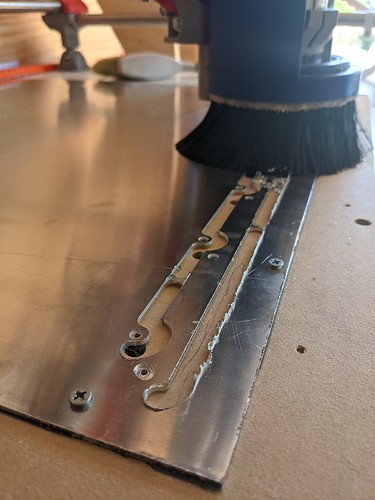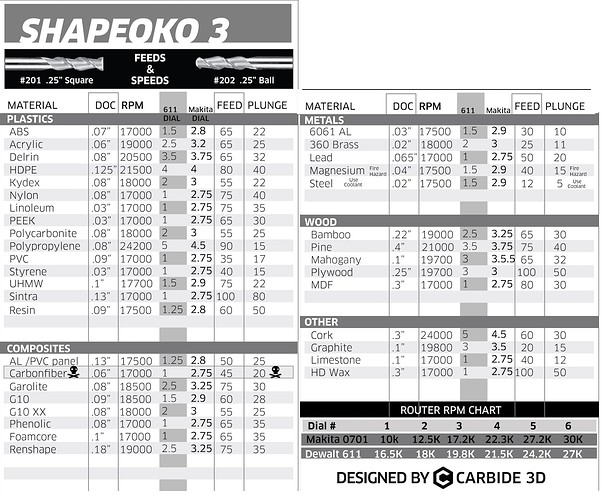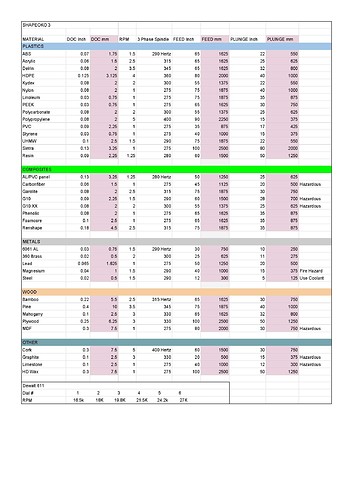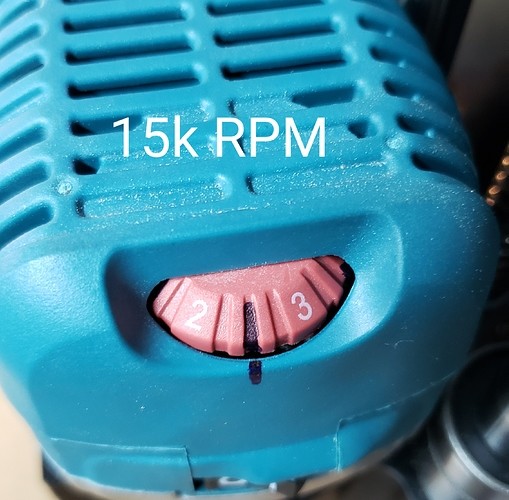The biggest problem with rpm is the bit size. Bigger bits will cover more distance at the cutting edge (rotationally) than small bits for a given rpm because the circumference is larger. CircumferencexRPM is what we call surface speed (its the “speed” in “feeds and speeds”).
The problem with caring about THAT is that it changes with material (aluminum vs wood), tool composition(carbide vs HSS), and even coatings(AlTiN, titanium, etc, or none at all) and cooling(none, air, mist, and I’ve seen one flood cooled mpcnc).
It gets even MORE nebulous when you look at some of the HSM literature that shows even though you can machine aluminum at 500 sf/m (as an example) it might cut cooler at 1200+.
Basically, it gets really complicated if you need to care about it, and i suspect it’s just one of the many reasons professional machinists are valuable.
For most of us, woods are the main course, and they tolerate a wide range of surface speeds so it really ends up not mattering too much and we don’t need to care about it-hence the advice to calculate the chip load. I like to start with the chipload and multiply by the flute count and rpm to get a total distance to travel in a minute. Divide by 60 if you like distance/sec.
0.001in/tooth seems to work well on a variety of machines as a baseline to prevent tool rubbing (where you don’t actually cut material and generate a bunch of heat instead) on 1/8 in and 1/4 in tools, but smaller tools might need even less than that.
So for woods, pick a speed based on how comfortable you feel running your router (maybe you just don’t want to run full out, or you’re worried about overheating of you run it too slow), calculate the feed rate, and let it rip. If it goes well try deeper. If you’re already deep enough or it starts making noise, try faster feed instead. When you get a good combo WRITE IT DOWN. It won’t be useful anymore if you change your machine size or spindle, but it will be a great data point to have when you sit down to program jobs in the future.





